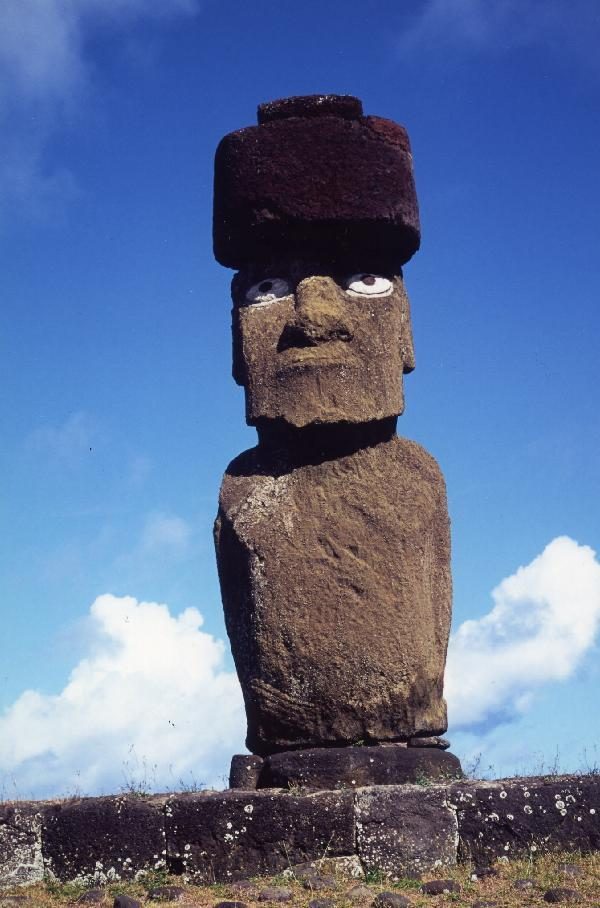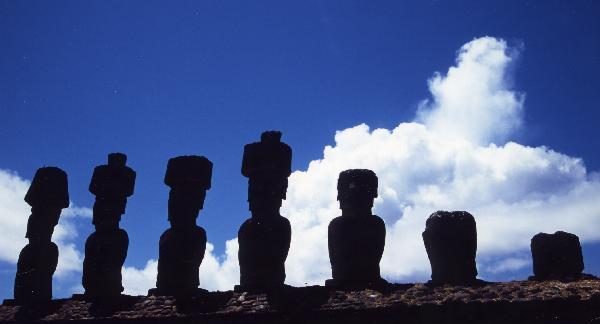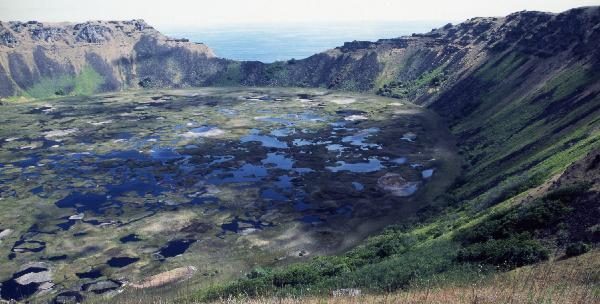Republic of Chile Easter Island_Moai and the history of the island
- Saturday, March 14 2009 @ 04:56 PM JST
- Contributed by: tetujin60
- Views: 7,086

.jpg)
It is the most isolated Island on earth, 3700 km from South America and 4000 km from Tahiti. Even the nearest Island where people live is 2000km. This inconvenience protected the ruins of the Island. It is a volcanic Island formed from submarine volcanoes, and three volcanic lakes are 1500 m in diameter. Groundwater is now used as drinking water, but in the past lakes supported the life of the Island.

Moai and Island history

The customer next to the restaurant shared what they ordered
A dog sleeping comfortably in the museum
Rano Kau is located on the caldera lake in the southwestern part of the crater on Easter Island, which was created by volcanic activity.
Tahai Ritual Village (1960)
Dinner for two tonight
Four of the seven pairs of Ahu Nou Nou have Pukao on them. Moai's eyes in the museum were found here.
Only one moai with eyes
A dining table surrounded by the Island residents, Mr. and Mrs. Mogami. Kotetsu tonight is often talked about. We may be meeting the climate customs of this Island. A fun dinner goes on and on.
Mr. Mogami, taxi driver Ferry Munyo, Kotetsu, me
.jpg)
.jpg)
Moai's face on display in the museum
When I first met the statue of Moai, the weathering of nature and the history of Moai exuded into the statue. A face with a low nose, a pointed face, and a pukao (hat) on the head, A stone statue of a slender woman, a stone statue of a small child, etc. Megalithic culture follows Egypt, the Incas, and Maya, and touches on archaeological mysteries everywhere.
.jpg)

Chasing cows in the middle of the road
Taro soup
Fish ceviche
Cows grazing
.jpg)
.jpg)
.jpg)
Ultraviolet rays are strong during the day, and sweaters and jumpers are worn in the morning and evening. The wind blows all year round and it is very easy to spend. With this, I can't go back to Osaka, where it's hot in summer and cold in winter. 42% of the island is a World Heritage Site. It didn't take long to get along with the people of the island who lived with smiles.
.jpg)
.jpg)
In 1826, Islanders were hunted for slaves as husbands of phosphate rock miners in Peru. That number is 1000 people. Only 15 people were released from slavery a year later and survived on the Island. A barren area spreads out on the Island. It was 40 years ago (1967) that I woke up to the tourism business. The tour route is strictly regulated and you are not allowed to touch the moai.
.jpg)
.jpg)
.jpg)
.jpg)
The life of the Islanders is slow in the morning. It is a habit to eat when you are hungry without deciding the meal time until morning. At the restaurants I went to on the Island, the Islanders came one after another from 11:00 to 12:00 at night. Supper is from 9 or 10 o'clock every day until midnight.
.jpg)
There are more than a dozen Moai statues on the coastline of a small Island. More than 1000 Moai statues were watching over the Islanders, but most of them were destroyed and only 40 or so were restored to entertain 20,000 tourists a year. Only one of the restored "moai" has eyes, but at first it is said that all moai had eyes. History tells the tragedy of the Islanders and Moai.
